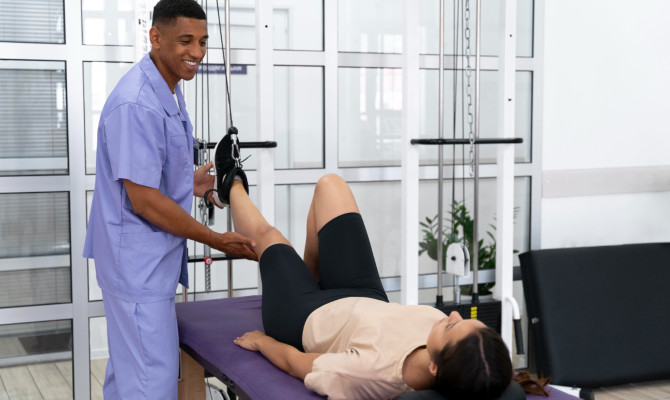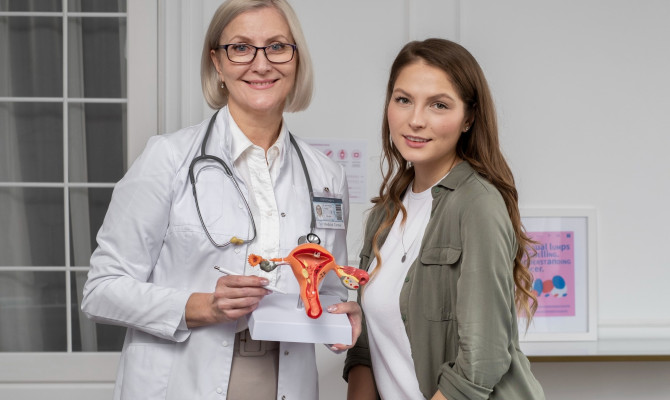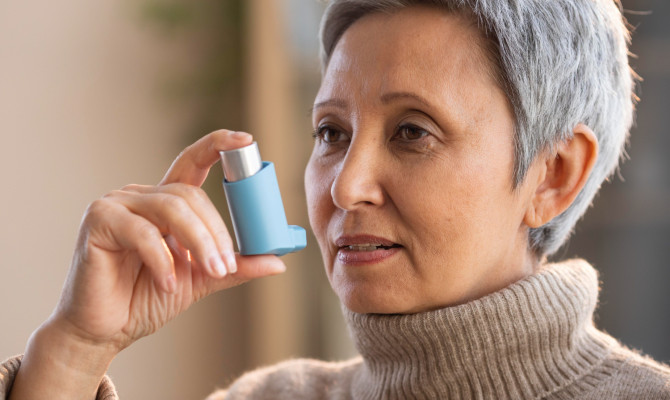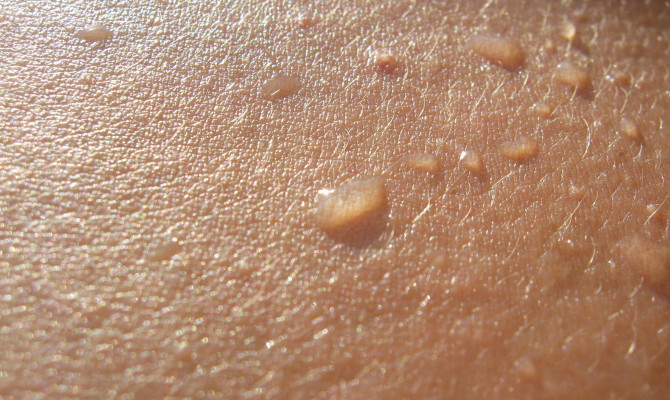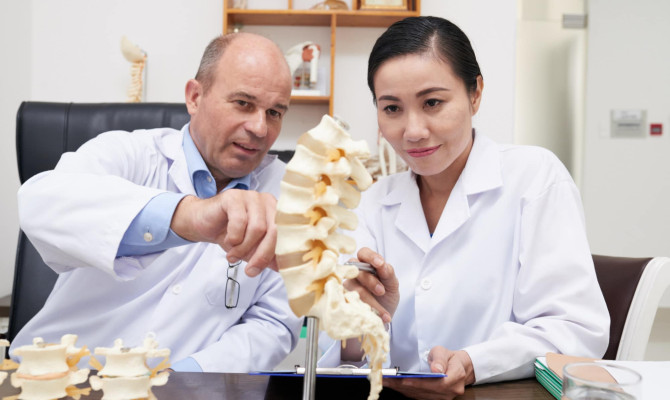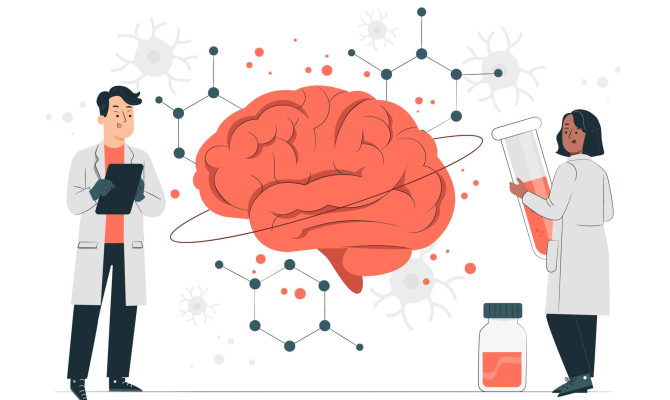Stroke vs Aneurysm Everything You Need To Know About

- Stroke
- 27 Sep 2023
Overview
Stroke Vs Aneurysm
Stroke and aneurysm are health complications that can happen to the brain, but they are different. Even though an aneurysm can lead to a bleeding stroke, they are not the same thing.

A stroke happens when a blood vessel in the brain bursts or when the brain doesn’t get enough blood.
The key things that make a stroke and an aneurysm different are the causes and location.
- When blood flow to the brain stops or slows down, this is called a stroke.
- An aneurysm is a bulge in a blood vessel that happens when the wall of the vessel is weak.
Stroke
What is a Stroke?
When something stops blood flow to part of the brain or when a blood vessel in the brain bursts, this is called a stroke or a brain attack. A stroke 1 Stroke | Researched based study from Centers for Disease Control and Prevention can cause brain damage that lasts for a long time or even death.
What goes on in the brain when someone has a stroke?
The brain is where our thoughts, feelings, and words come from. It also controls our actions. The brain also handles many of the body’s processes, such as breathing and digesting food. Your brain needs air to work right. All the parts of your brain get oxygenated blood from your vessels. If something blocks the flow of blood, oxygen can’t get to the brain cells, and they start to die within minutes. This will give you a stroke.
Causes
Causes of Stroke:
Strokes happen when there is a break in the flow of blood to the brain, which can kill brain cells. Ischemic stroke and hemorrhagic stroke are the two main types of stroke.
Different things can cause these strokes, and often more than one thing is to blame. Here’s a quick look at what causes each type:
1) Ischemic Strokes:
- Ischemic strokes are the most common type. They happen when a blood vessel gets blocked or narrowed, cutting off blood flow to a part of the brain.
Ischemic strokes are most often caused by:
- Atherosclerosis: Atherosclerosis is when fatty layers (plaque) build up in the arteries, which can cause the blood vessels to shrink or close off.
- Embolus: A blood clot or foreign body that forms somewhere else in the body and moves to the brain, blocking an artery in the brain.
- Thrombosis is when a blood clot forms in an artery in the brain, blocking blood flow.
2) Hemorrhagic Stroke:
- When a blood vessel in the brain bursts, causing bleeding in or around the brain, this is called a hemorrhagic stroke.
Hemorrhagic strokes are most often caused by:
- Hypertension (high blood pressure): Long-term high blood pressure can make the walls of blood vessels weaker and more likely to break.
- Cerebral aneurysms: These are weak spots in the walls of blood vessels that can balloon out and break, letting blood into the brain.
- Arteriovenous Malformations (AVMs): Abnormal chains of blood arteries that can break and cause bleeds in the brain.
- Trauma: A severe head injury or blow to the head can damage blood vessels and cause bleeding in the brain.
3) TIA “Transient Ischemic Attack”:
- A “mini-stroke” is a brief stoppage of blood flow to the brain that causes temporary mental symptoms.
- TIAs are caused by a blood clot or other blockage that briefly closes off an artery that leads to the brain, but the blockage breaks or moves out of the way before it can cause lasting damage.
- People who have TIAs are often at risk of having a more major stroke in the future.
Other Risk Factors Include:
In addition to the reasons listed above, there are other things that can make it more likely that you will have a stroke. These things are:
- Age: The chance of having a stroke goes up with age.
- Gender: The chance of stroke is different for men and women at different ages.
- A history of stroke: A history of stroke or certain health problems in the family can make the chance higher.
- Race/Ethnicity: Some groups of people are more likely to have a stroke than others.
- Smoking: Tobacco use can hurt blood vessels and raise the chance of having a stroke.
- Diabetes: Diabetes that isn’t under control can hurt blood vessels.
- High Cholesterol: Plaque can build up in the airways when the amount of cholesterol is high.
- Obesity: Being overweight puts you at risk for a stroke in more than one way.
- Sedentary Lifestyle: Not getting enough exercise can make other risk factors worse, such as high blood pressure and being overweight.
- Cardiovascular Disease: Conditions like heart disease can make a person more likely to have a stroke.
- Using too much alcohol or drugs: Using too much alcohol or certain illegal drugs can increase the chance of a stroke.
- Bad Diet: Diets that are high in fatty fats, salt, and cholesterol can make the chance of having a stroke higher.
If you think someone is having a stroke, get them to a doctor right away. Getting help quickly can make a big difference in how things turn out.
Symptoms
Symptoms of Stroke:
Depending on the type of stroke and part of the brain that is damaged, the symptoms can be different. It’s important to know the signs of a stroke and get medical help right away, because getting care quickly can make a big difference in how things turn out.
People often use the word FAST to help them remember the most common signs of a stroke:
F: Face Hanging Down:
- The face may drop or go numb on one side. Ask the person to smile. If one side of their face doesn’t move as well as the other, it could be a sign of a stroke.
A: Your arm is weak:
- One arm may lose strength or feel numb. Ask the person to raise both arms. If one arm falls, it could be a sign of a stroke.
S: Difficulty of Speech:
- The person’s speech may become slurred, and they may have trouble speaking or following what other people are saying. Ask the person to repeat a simple line. If they talk strangely or are hard to understand, this could be a sign that they have had a stroke.
T: Time
- If you notice any of these signs, it’s very important to call 911 right away. When treating a stroke, time is of the key, and getting to the hospital quickly can lower the chance of long-term damage.
Some other signs of a stroke may include:
- Sudden numbness or weakness: This can affect the face, arm, or leg, especially on one side of the body.
- Sudden confusion: This means having trouble understanding or getting lost all of a sudden.
- Sudden vision problems: Problems with one or both eyes.
- Sudden, severe head pain: Usually comes with other symptoms.
- Suddenly having trouble walking: Losing your balance, feeling dizzy, or having trouble walking.
Don’t wait to see if the signs go away if you think someone is having a stroke. Every minute counts, and getting medical help quickly can make a big difference in how well they get better. If you or someone else is having these signs, you should call 911 right away.
Treatment
Treatment of Stroke:
There are a number of ways to treat a stroke, such as:
Thrombolytic therapy:
- Thrombolytic therapy Uses drugs like tissue plasminogen activator (tPA) to break up blood clots that are stopping blood from getting to the brain. For tPA to work, it must be given within a few hours of the start of symptoms.
Mechanical thrombectomy:
- Blood clots in the brain are removed by a special tool. It is usually done when thrombolytic treatment can’t break up a big clot.
Antiplatelet treatment:
- Using medicines like aspirin or clopidogrel to stop blood clots from forming. It is often used with other medicines to help people who have had a stroke.
Anticoagulants:
- Using drugs like warfarin or heparin to keep blood from clotting. It is often given to people who are more likely to have a stroke because of things like atrial fibrillation.
Surgery
Surgical Procedure:
Surgery is usually done to treat a stroke when a blood vessel is blocked (called an ischemic stroke) or when there is bleeding in the brain (called a hemorrhagic stroke).
The type and intensity of the stroke, as well as the patient’s general health, will determine the type of surgery and treatment plan.
Here are some surgeries and medicines that are often used to treat a stroke:
1) Surgery for an ischemic stroke:
Thrombectomy:
- Thrombectomy is a surgery used to remove a blood clot from an artery that is blocked. It is usually done within a few hours of the first sign of illness. During the process, a tube is moved through the blood vessels to where the clot is.
- The blood clot is then either taken out by hand or broken up with special tools.
Endarterectomy of the carotid artery:
- A carotid endarterectomy may be done if the brain isn’t getting enough blood because plaque has built up in the carotid arteries, which are big vessels in the neck.
- In this surgery, the plaque on the inside of the artery is removed to get the blood flowing again.
Angioplasty and stent placement:
- In angioplasty, a balloon-tipped tube is used to open blood channels that are narrowed or closed. In some cases, the artery may be kept open with a stent, which is a small metal tube.
2) Surgery for a hemorrhagic stroke:
Craniotomy:
- When there is blood in the brain, as in a hemorrhagic stroke, a craniotomy may be done. To do this, a piece of the brain has to be removed to get to the bleeding spot and remove the blood clot.
- In some cases, aneurysms or arteriovenous malformations (AVMs) that have caused the bleeding are fixed with surgery.
Coiling:
- Coiling is a technique that can be used to treat brain lesions.
- This is done by putting a small coil into the aneurysm through a tube. This makes the blood clot and lowers the risk that the aneurysm will burst.
Cutting:
- Clots can also be treated by putting a metal clip at the base of the aneurysm to keep it from bursting.
It’s important to remember that not every case of stroke needs surgery. Medical care, such as clot-dissolving drugs (thrombolytics) for ischemic strokes or blood pressure control for hemorrhagic strokes, can also be successful treatments.
Aneurysm
Aneurysm
An aneurysm is a bulge or growing out of the wall of a blood vessel in one spot. Aneurysms can happen in any artery in the body, but they most often affect the vessels in the brain (called cerebral aneurysms) and the heart (called aortic aneurysms).
Causes
Causes of aneurysm
Aneurysms don’t always have clear reasons, but there are a few things that can make them happen:
Weakness of arterial walls:
- The weakening of the walls of the blood vessel that is damaged is one of the main causes of aneurysms.
Genetics:
- Aneurysms may be caused by things in your genes, according to some research. If someone has a family history of aneurysms, they may be more likely to get one themselves.
Atherosclerosis:
- Plaque can build up inside blood vessels, which is called atherosclerosis. This can make the walls of the arteries weaker. This can make the blood vessel more likely to get an aneurysm.
High blood pressure:
- Chronic high blood pressure, or hypertension, can put too much stress on the walls of blood vessels, which could make them weaken and lead to an aneurysm.
Smoke:
- Aneurysms are much more likely to form and break when people smoke. It can hurt the walls of blood vessels, making them more likely to form aneurysms.
Connective Tissue Disorders:
- Some inherited or new conditions that affect the connective tissue of the body, like Marfan syndrome and Ehlers-Danlos syndrome, can make it more likely that an aneurysm will form.
Diseases and inflammation:
- Aneurysms can happen when infections or long-term inflammation of the blood vessel walls damage them.
Age:
- Aneurysms are more likely to happen as you get older because blood veins weaken over time.
Sex:
- Some types of aneurysms are more common in one side than the other. For example, women are more likely to have brain tumors than men.
Aneurysms are less likely to form and burst if you get regular checkups, take care of risk factors (like controlling your blood pressure and not smoking), and see a doctor if you have any signs that worry you.
Recovery
Can an Aneurysm be Totally Recovered ?
- To completely recover, allow 3 to 6 weeks. This might take longer if you had bleeding from your aneurysm. For up to 12 weeks or longer, you can feel exhausted. You can have ongoing issues including difficulties speaking or thinking, muscular weakness, or numbness if you have a stroke or brain damage as a result of the bleeding.
Types
Types of Aneurysm
There are different kinds of aneurysms that affect different parts of the body. But here are the three most important ones:
Aortic Aneurysm:
- Happens in the aorta, which is the main blood vessel that delivers oxygenated blood from the heart to the rest of the body. Aortic aneurysms can happen in different parts of the aorta, like the abdominal or thoracic aorta.
- The most common kind of aortic aneurysm is an abdominal aortic aneurysm, which happens when the wall of the abdominal artery gets weak and bulges out.
- When the wall of the thoracic artery gets weak and bulges out, this is called a thoracic aortic aneurysm.
- Both types of aortic aneurysms can be dangerous if they burst because they can cause serious internal bleeding and even death.
Aneurysm of the Brain:
- Brain aneurysm will 3 Aneurysm | Researched based study from National Institutes of Health Takes place in the brain’s blood vessels.
- A cerebral aneurysm is a feeble or thin spot on the wall of a vessel of blood in the brain that bulges out and fills with blood.
- If the aneurysm breaks, it can cause an ischemic stroke, which is bleeding in the brain, and can be deadly.
Peripheral Aneurysm:
- Happens in blood vessels that aren’t in the heart or brain, like those in the legs, arms, and organs.
- A peripheral aneurysm can make you feel pain, swelling, and pulsing. If a peripheral aneurysm bursts, it can cause serious bleeding and shock.
Saccular Aneurysm:
- It is also called a “berry aneurysm” and is caused by a weak spot in the wall of an artery. It is the most common kind of aneurysm. It usually happens in the brain, but it can also happen in other places, like the artery.
- Most saccular aneurysms are round or oval, and they have a clear “neck” that connects them to the regular channel.
Splenic Aneurysm:
- Happens in the blood vessels of the spleen, an organ on the left side of the belly that helps filter blood and get rid of old or broken red blood cells.
- Splenic aneurysms can be caused an injury, an illness, or a condition that runs in the family.
Fusiform Aneurysm:
- Caused by the widening of an artery around its whole edge, not just at one place.
- Usually happens in the arteries and is often linked to things like atherosclerosis or high blood pressure.
- Most fusiform aneurysms are long or spindle-shaped, and they don’t have a clear neck.
Fungal Aneurysm:
- An infection in the wall of an artery causes this. Different types of germs, such as bacteria, fungi, and viruses, can cause the infection.
- Most of the time, a mycotic aneurysm is caused by fever or endocarditis, but it can happen in any artery in the body.
Traumatic Aneurysm:
- Caused by an injury to an artery, like a blow to the chest or a stab wound.
- Traumatic aneurysms can happen in any artery in the body, and if they are not handled right away, they can be life-threatening.
Treatment
Treatment of Aneurysm
The best way to treat an aneurysm relies on where it is, how big it is, what shape it is in, and how likely it is to break. Aneurysms can be treated both with surgery and without surgery.
Here are some of the most popular ways to treat aneurysms:
Observation (Waiting with Care):
- Small aneurysms that don’t hurt and don’t have a high chance of bursting can be watched over time. With regular MRI or CT scans, the growth and changes of the aneurysm can be tracked.
Drugs:
- High blood pressure and cholesterol are two factors that can lead to aneurysms and may be treated with medication.
Endovascular Coiling:
- An interventional radiologist or neurointerventionalist does endovascular coiling, which is a slightly invasive treatment. During this operation, a tube is led through the blood arteries to the site of the aneurysm. Then, tiny wires are put inside the aneurysm to help a blood clot form, cutting it off from the blood flow and lowering the risk that it will burst.
Coiling with the help of a stent:
- In some cases, the coils may be held in place by putting a stent (a small metal tube) across the neck of the aneurysm. This can help keep the coils from moving while still letting blood flow through the vessel.
Clipping in surgery:
- Traditional surgery is used to treat brain aneurysms by clipping them off. A doctor puts a metal clip around the aneurysm’s neck to cut it off from the main blood stream. This keeps blood from flowing into the aneurysm.
Flow Diverting:
- Flow diversion is a newer treatment that includes putting a stent-like device across the neck of the aneurysm to reroute blood flow away from the aneurysm. This helps a blood clot form inside the aneurysm, which closes it off.
Repairing an aneurysm (open surgery):
- For aneurysms that are bigger, major surgery may be needed. This is done by making a cut, getting to the aneurysm, and either removing or fixing the part of the blood vessel that is weak. Most of the time, this method is used for aorta aneurysms.
If you know you have an aneurysm or think you might have one, it’s important to talk to a doctor about your choices and get personalized help.
Survival
Survival Rates
Since stroke and aneurysm are two different conditions, their mortality rates are also very different.
- The National Institute of Neurological Disorders and Strokes says that 25% of people who have an aneurysm die within 24 hours, and another 25% die from problems within 6 months 3 Survival Rates | Researched based study from National Institutes of Health. Some people may have lasting damage to their nerves, while others may have no side effects at all and get better. Others may need anywhere from a few weeks to a few months to get better.
- When a person has a stroke, on the other hand, 20% of 4 Survival Rates | Researched based study from National Institutes of Health them will die within a year. Unlike people with aneurysms, people who have had a stroke may be able to get better with thrombolytic treatment, which can reverse the signs of a stroke.
- The result can also be affected by how bad the stroke was. The less serious the injury, the higher the chance that it can be fixed. Also, it depends on which part of the brain was hurt by the stroke. If the person couldn’t swallow, they could get aspiration pneumonia if something that could cause an illness got into their lungs.
- If they were disabled or had weak muscles, their skin could start to break down and cause pressure sores and infections. The more serious the stroke, the more likely it is that seizures will happen.
Prevention
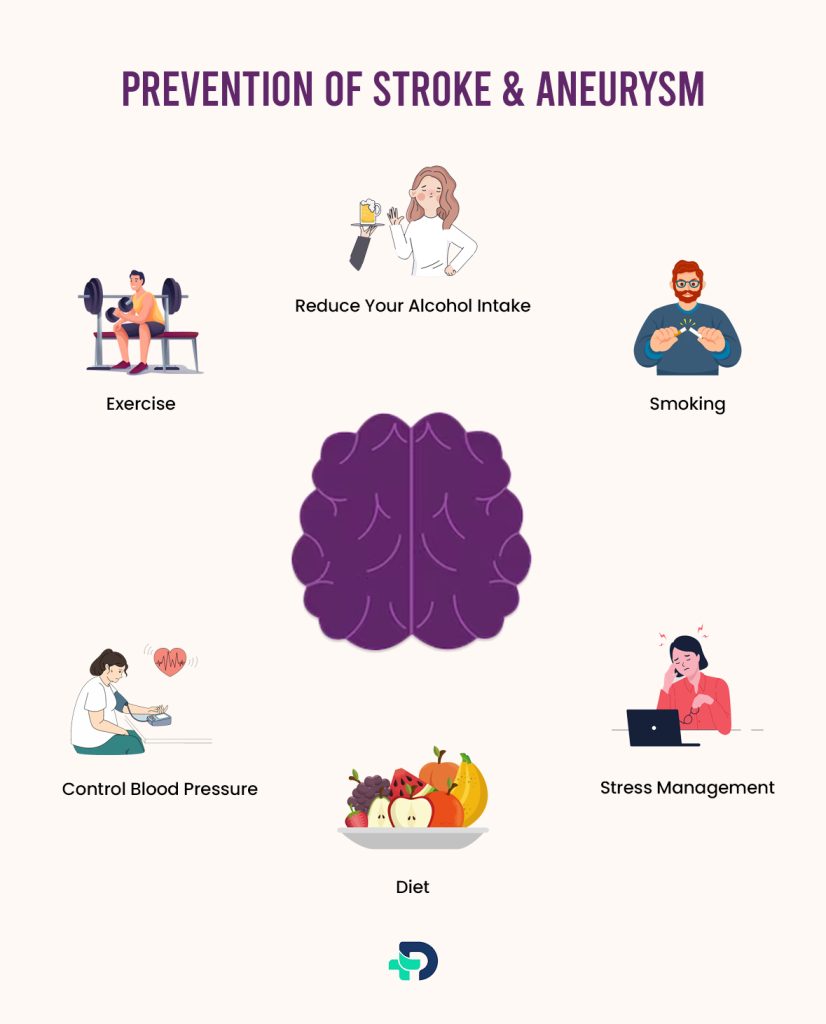
Prevention of Stroke & Aneurysm
Adopting a healthy lifestyle, controlling risk factors, and getting medical attention when necessary are all important steps in preventing strokes and aneurysms .2 Prevention of Stroke | Researched based study from Centers for Disease Control and Prevention
While it may not always be feasible to remove all danger, you may greatly decrease it by adhering to these recommendations:
Diet:
- Eat a diet full of fruits, vegetables, whole grains, lean meats, and healthy fats; this is step one of a healthy lifestyle. Avoid eating too much salt, fat, sugar, and trans fat.
- Stay Hydrated: Stay hydrated by consuming large quantities of water and reducing your intake of sugary and caffeinated drinks.
- Manage Your Serving Sizes: A healthy weight may be maintained by paying attention to serving portions.
Exercise:
- Exercise on a regular basis by going for a brisk walk, running, swimming, or riding a bike. Aim for at least 75 minutes of strenuous exercise every week, or 150 minutes of moderate activity.
- To increase your muscle mass and speed up your metabolism, you should do strength activities.
Control Blood Pressure:
- Maintain a blood pressure reading that is within the normal range by dietary and, if necessary, pharmaceutical intervention.
- If you have diabetes, it is important to work with your doctor to maintain healthy blood sugar levels.
- Lower Your Blood Pressure: Maintain a healthy weight by eating well and, if necessary, taking cholesterol-lowering medication.
Smoking:
- The danger of having a stroke or aneurysm is greatly increased by smoking, therefore if you are a smoker, please consider giving up the habit.
Reduce Your Alcohol Intake:
- Drinking alcohol should be done so with moderation. This implies no more than one drink per day for ladies and two drinks per day for males.
Stress Management:
- Try deep breathing, meditation, yoga, or going for a walk in the park.
Strokes and aneurysms are preventable if you make these adjustments to your lifestyle and manage your risk factors.
Complications
Complications of Strokes & Aneurysms
The severity of the consequences associated with strokes and aneurysms might vary depending on a number of variables.
Possible aftereffects of strokes and aneurysms include the following:
Stroke Complications:
Disability:
- Stroke victims 5 Stroke Complications | Researched based study from National Institutes of Health may be left with permanent impairments including paralysis, weakness, coordination issues, or trouble communicating, among others, due to the damage done to their brains.
Disabilities in Expressive and Analytical Thinking:
- Stroke victims may have cognitive deficits such as impaired speech, memory loss, and confusion.
Choking:
- Stroke patients may be at risk for choking and aspiration pneumonia if they have trouble swallowing (dysphagia).
Pain:
- Muscle weakness, stiffness, or nerve injury are all potential causes of persistent pain in stroke survivors.
Depression & Anxiety:
- Due to the emotional and physical difficulties of rehabilitation, mental health concerns such as depression and anxiety are frequent following a stroke.
Dysfunction:
- Stroke-related damage to the neurological system may cause bladder and bowel dysfunction. The risk of developing deep vein thrombosis in the legs and a pulmonary embolism in the lungs is increased after a stroke because of the patient’s inability to move about freely.
Aneurysm Complications:
Tearing and Bleeding:
- The rupture of an aneurysm may cause life-threatening brain bleeding, sometimes known as a hemorrhagic stroke. Damage to the nervous system, and even death, may result from this.
Hydrocephalus:
- Hydrocephalus occurs when cerebrospinal fluid cannot drain normally from the brain when an aneurysm ruptures and bleeds.
Vasospasm:
- Vasospasm may occur when brain blood arteries narrow after an aneurysm bursts, limiting blood flow and increasing the risk of further injury.
Brain Ischemia:
- Clots formed as a consequence of aneurysms may restrict blood supply to areas of the brain, a condition known as ischemia, which can have detrimental effects on brain tissue.
Defects in the Nervous System:
- Weakness, numbness, and issues with vision and speech are only some of the neurological abnormalities that may result from an aneurysm.
Cognitive deficits:
- Cognitive deficits, memory issues, and difficulty in focus may result from aneurysms that damage specific regions of the brain.
Aortic Aneurysms:
- That Come Back Aneurysms in other blood arteries may form even after effective treatment of the original aneurysm.
Seeking medical assistance and adhering to suggested therapies may dramatically improve outcomes and quality of life if you or someone you love has suffered a stroke or is at risk for an aneurysm.
Conclusion
Aneurysms & Strokes – Early Diagnosis & Prompt Medical Action
Aneurysms and strokes are both major medical situations that need to be treated right away. Aneurysms feature weakening blood vessel walls that might end in rupture, while strokes can be caused by either blocked blood arteries or bleeding in the brain. Both illnesses may benefit greatly from early diagnosis of symptoms and proper medical therapy. Seek prompt medical attention if you or someone you love is showing signs of a stroke or aneurysm to guarantee the best result.
Any feedback on this article?
 This Articles content was accurate
This Articles content was accurate Very Informative Article
Very Informative Article I have a question or a comment
I have a question or a comment
 This article contains inaccurate content
This article contains inaccurate content This article was not helpful
This article was not helpful I have a question or a comment
I have a question or a comment
We appreciate your helpful feedback!
Checkout our social pages
References
-
Centers for Disease Control and Prevention
Stroke: Causes | Types | Symptoms | Treatment
-
Centers for Disease Control and Prevention
Prevention of Stroke
-
National Institutes of Health
Aneurysm | Survival rates
-
National Institutes of Health
Survival Rates
-
National Institutes of Health
Stroke Complications














